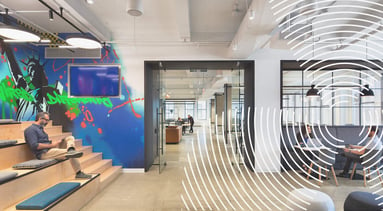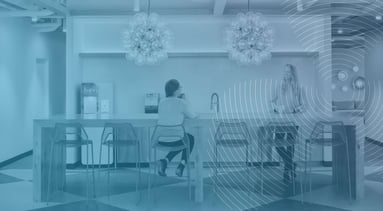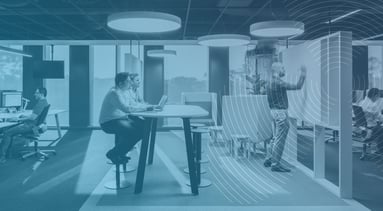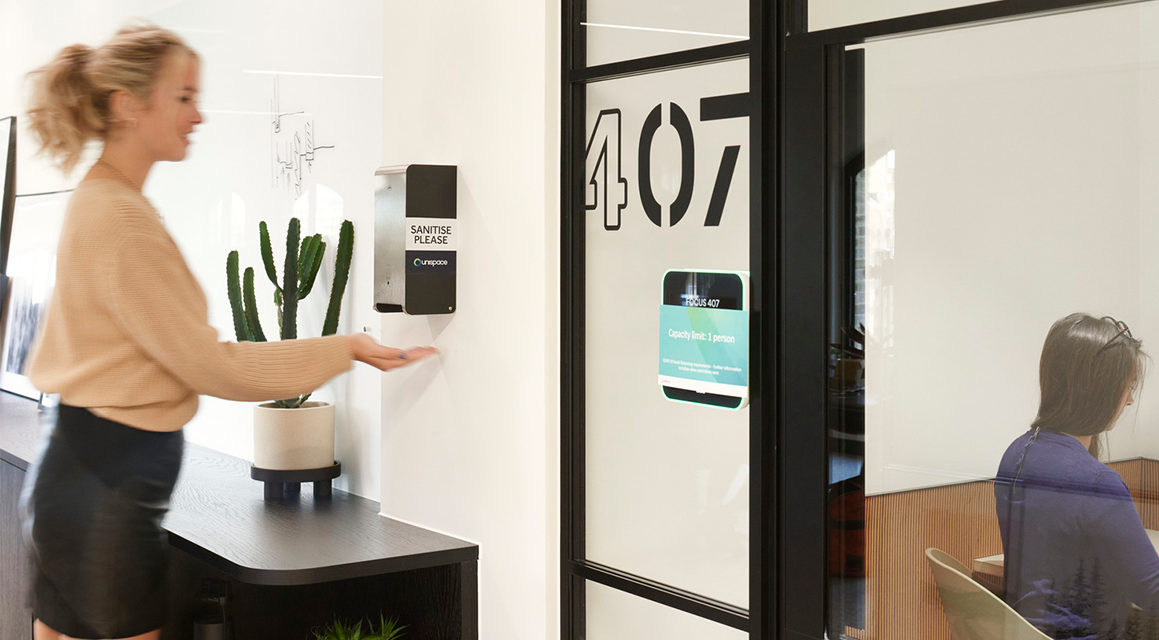
With Covid vaccination programmes rolling out globally, there’s growing optimism in the business world about the possibility of finally returning to the office.
But as Steve Quick, Global CEO at Unispace explains, physical environments will still need to be reconfigured to ensure employees can return to the office safely and want to be there.
Keeping up with the progress of the Covid vaccination campaign is an impossible task. At the time of writing, more than 90 million vaccinations across 62 countries had been administered, but progress is occurring at such pace that the numbers are already outdated by the time they’re published.
It’s no wonder that businesses are starting to give serious thought to the possibility of returning to the office. Though many employees do not view the situation in the same light. In one recent study 75% of remote workers across the US, UK, Germany and the Middle East expressed concern about workplace safety, while one quarter said they would sooner look for a new job than return to an office lacking in appropriate safety measures.
“Employees have successfully transitioned to remote working and understandably want to put their health – and the health of their loved ones – first, which means being cautious about where they go and who they come into contact with,” says Quick, Global CEO at Unispace. “If employees don’t believe the office will be a safe environment, they won’t be coming back in a hurry, even as the number of vaccinated colleagues grows.”
Vaccine policies could prove problematic
Although many country’s vaccination programmes are accelerating, there’s no guarantee that working age people will be vaccinated any time soon. Most Governments are focusing their initial efforts on reaching high risk groups and frontline health workers.
What’s more, there is already a debate raging about the legality of organisations attempting to create vaccine ‘policies’ and the risk that such policies could be interpreted as workplace discrimination.
“All good employers should encourage their teams to prioritise their health and wellbeing, including getting vaccinated for Covid. While sharing factual guidance about Covid-19 might be useful for employee education, trying to enforce a policy of mandatory vaccinations could create significant HR issues,” notes Quick.
One further problem with relying on vaccines to enable a return to the office is the uncertainty over whether vaccinated people can still spread Covid-19 or its variant. Until there is incontestable data clarifying this matter, employees are going to remain sceptical about coming into close contact with their co-workers, even if they themselves have been vaccinated.
The pros and cons of office testing programmes
Another idea that has been much flaunted is the introduction of mass Covid testing within office environments. This is already gathering pace in the UK, with the likes of leading retail chain John Lewis, Tata and Jaguar all rolling out 15-minute swab tests in recent weeks. Indeed, it’s easy to see the idea taking off in other locations such as Southeast Asia, where thermal cameras, temperature sensors and body scans are commonplace for anyone entering the office.
However, some offices simply won’t be designed in a way that accommodates testing before people enter, while tests generally require trained health professionals to administer. Testing 200 people three times per week could take monthly costs into the thousands and concerns have been raised about the accuracy of the test technology.
“Mass testing looks like a great option for large organisations that absolutely cannot function without large numbers of people on the premises each day,” suggests Quick. “For many our our clients we’re talking to, in typical office environments however, the costs and complexity involved could make testing a non-starter. Most organisations will probably have to look to other, more practical solutions to help keep staff safe.”
Reduced office capacity solves multiple challenges
Early into the pandemic we recognised that workplace needs were going to change fundamentally due to Covid-19, and we set about devising our Propeller framework to help guide organisations into the post-Covid world.
Crucially, we saw that reduced capacity offices were not only essential from a safety perspective, enabling social distancing and providing reassurance to returning employees, but with the right design approach, they could actually be better suited to future organisational needs. Additionally a reduced office capacity is inevitable with employees already indicating they will work from home at least 1 day a week post pandemic.
“The remote working revolution has helped both employer and employee to the realisation that focus work no longer needs to take place in a large office,” explains Quick. “Instead, the office will become a place where decisions are made, strategic plans formulated and creativity nurtured in a highly collaborative social environment.”
The post-Covid office environment needs to be reinvented to offer more tailorable space in support of these needs – for example, with movable and multi-purpose fixtures, furniture, partitions and walls which can be adapted according to function, not to mention Covid safety precautions.
Acoustics also need to take top priority in this reconfigured environment. There will be fewer people in meeting rooms, physically spaced out and joined by virtual colleagues, so acoustic treatments are required to ensure everyone can hear one another clearly.
Additionally, technology such as room occupancy sensors or Wi-fi triangulation sensors (which provide ‘heatmaps’ showing which areas of the office are most populated) can be introduced to help better manage office capacity and keep everyone safe. 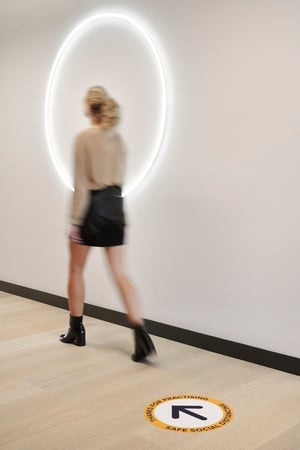 Safer hygiene and cleaning protocols will need to be implemented so we rely on our cleaning providers. And employees should take responsibility to indicate after they’ve used an area so it can be cleaned accordingly as well as following safety procedures set out by the business like on-way systems.
Safer hygiene and cleaning protocols will need to be implemented so we rely on our cleaning providers. And employees should take responsibility to indicate after they’ve used an area so it can be cleaned accordingly as well as following safety procedures set out by the business like on-way systems.
“The global progress on Covid vaccination is already the good news story of the year, but on a practical level, organisations need to be focusing on getting their physical spaces fit for purpose if they want employees to return with confidence,” adds Quick. “This isn’t just about installing plastic screens or moving desks further apart – done right, it’s an amazing opportunity to rethink how the office functions so that, post-pandemic, it’s better equipped to suit an organisation’s core goals. We’ve all seen the arrows on the carpet and the yellow caution tape across every other workstation, but we need to offer more strategic long term solutions for the future.”
To hear more about how to adapt your workplace for the post-Covid world, download our Propeller Workplace guide here.
